Categories: Electrician Secrets, Sockets and switches
Number of views: 45077
Comments on the article: 6
Which is better to use: loop-through switches or bistable relays
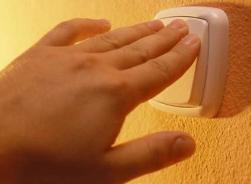 Convenience of lighting control is one of the basic rules that guide the installation of electrical wiring. If the room is relatively small in area, then to control the various lighting devices mounted in this room, one light switch is enough.
Convenience of lighting control is one of the basic rules that guide the installation of electrical wiring. If the room is relatively small in area, then to control the various lighting devices mounted in this room, one light switch is enough.
In the event that the room is large enough or extended, then for the convenience of controlling the fixtures installed in it, it is more expedient to provide for the possibility of their inclusion from two or more places. To realize this possibility, passage and cross switches or bistable relays are used. Below we briefly describe both methods of controlling lighting devices, and give their main advantages and disadvantages.
Using Feedthrough Switches
Through and cross switches have the principle of work similar to traditional switches of lighting. Lighting circuits are switched by closing and opening the contacts through which the load current of the lighting devices flows. Conductors are connected to the passage switches, the cross section of which corresponds to the load of the switched on lighting devices.
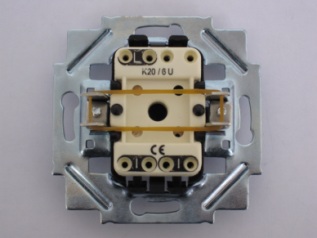
To realize the possibility of turning on the luminaires from two places, two passage switches are used, between which there are two conductors. If it is necessary to turn on lighting from three or more places, in addition to the passage switches, cross switches are added to the circuit.
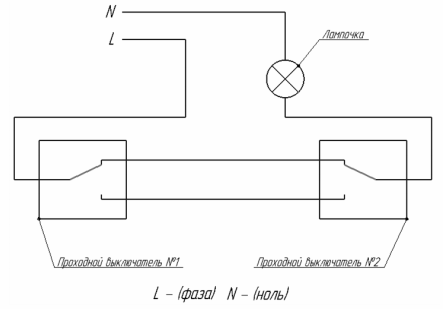
Connecting circuit breakers
For the operation of the circuit, power from L (phase) is supplied to the common input contact of the first pass-through switch, the other two contacts go to the second switch. Next, the power of the second switch is connected to a light bulb, which in turn is directly connected to N (zero).
Read more about the options for connecting walk-through switches here: Connecting circuit breakers
It should also be noted such a feature of passage (cross) switches, as the non-fixed position of the keys of their control. If in traditional light switches there is a fixed “On” and “Off” position, then in through (cross) switches the on and off position of the switch differs depending on the position of other switches designed to control one lighting line. That is, for the same switch, each of the positions can be either on or off.
For example, on the first switch to turn on the lighting in the room, the switch key must be set to the upper position, to turn off the lighting at the other end of the room from the other switch, you must press the up key, then on the first switch to turn on the lighting you will need to press the key from the top down position. This feature of controlling fixtures is somewhat inconvenient and requires getting used to.

The main advantage of using walk-through (cross) switches is the simplicity of the circuit. To implement this method of controlling fixtures, it is enough to purchase the necessary cable, switches and connect the lighting lines in the junction boxes installed in the room. Due to the absence of any complex devices and automation elements in the control circuit, this circuit is very reliable.
Using bistable (pulse) relays
Bistable relays or impulse relays controlled by applying a short pulse to them.The principle of controlling lighting devices using bistable relays is as follows.
In the distribution panel, a lighting circuit is connected to the power contacts of the relay, supplying one or another group of lamps. The control buttons, by means of which a pulse is applied to the bistable relay, are connected in parallel to each other and to the control contacts of the bistable relay. That is, in this case, you can connect an unlimited number of buttons for lighting control to the relay, each of which is connected in parallel to the previous one.
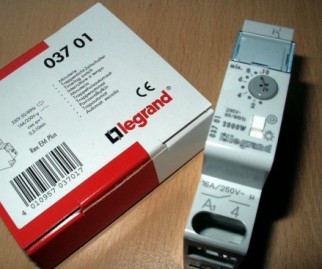
A significant advantage of using bistable relays is that the conductors, through which the control pulse from the buttons is supplied, can have a minimum cross-section, since, unlike the passage switches, the load current of the lighting devices does not flow through them. Also, a significant advantage is that a short pulse is enough to switch the lighting circuits - a short press of a button, and the pass and cross switch keys have two positions.
Buttons can also be considered more reliable compared to switches, since their design has only one pair of contacts.
If it is necessary to use two-key switches to enable turning on and off two independent groups of lamps, the organization of such switching on from two or more places using walk-through and cross switches requires laying two pairs of wires between the switches.
In this case, bistable relays have a significant advantage, since if they have two pairs of power contacts, the relay is controlled by one button.
For example, when you press the button for the first time, the first pair of contacts closes, when you press the second button, the second pair of power contacts closes, when you press the third, both pairs of contacts are closed, and when you press the next time, both pairs of contacts are opened. That is, to control two separate groups of lamps, the same button is used, also connected to the relay with one pair of conductors.
Read more about how to properly connect and use bistable relays here: Lighting Control Schemes
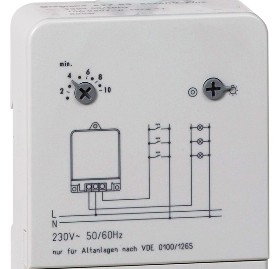
There are also bistable relays with several control circuits that perform different functions. For example, one control circuit enables and disables the circuit, and the second control circuit only performs circuit disconnections.
In this case, the first control circuit will be used to connect the on and off buttons of the fixtures from several places. The second control circuit can be combined with disconnecting circuits of other bistable relays designed to control lighting devices in other rooms, and connected to one button, when pressed, the lighting will be turned off in all rooms.
This function is quite relevant for large houses: by installing a similar button near the front door, you can turn off the lighting in the whole house from one point before exiting.
See also at i.electricianexp.com
:
